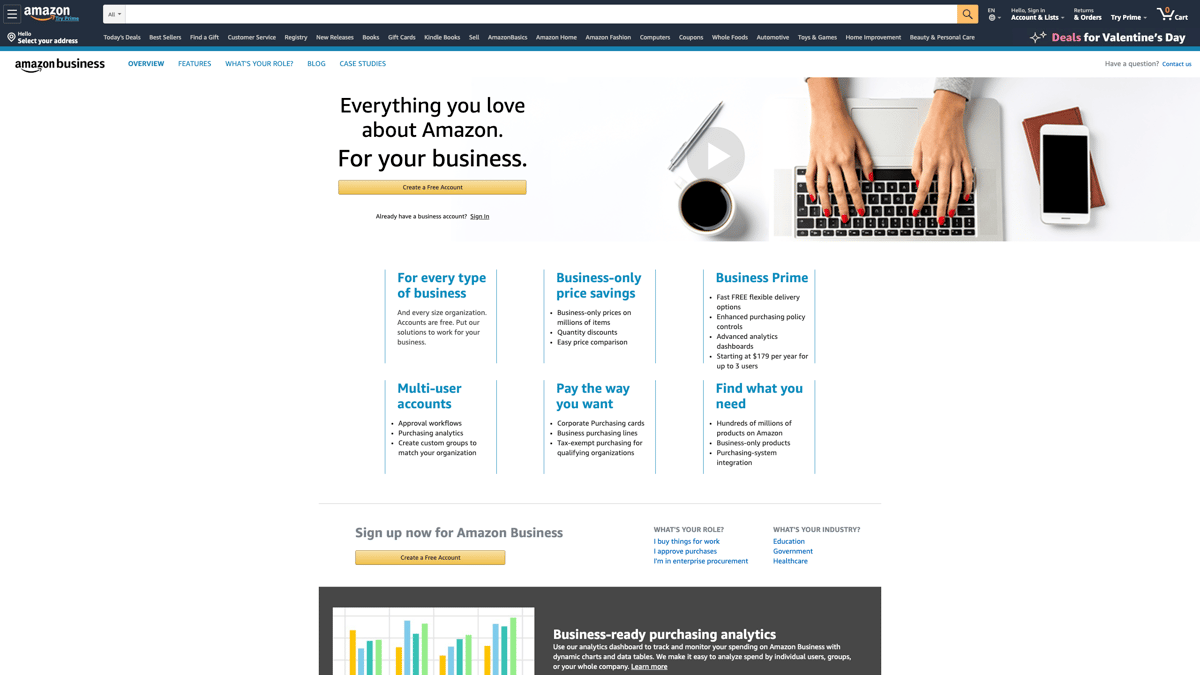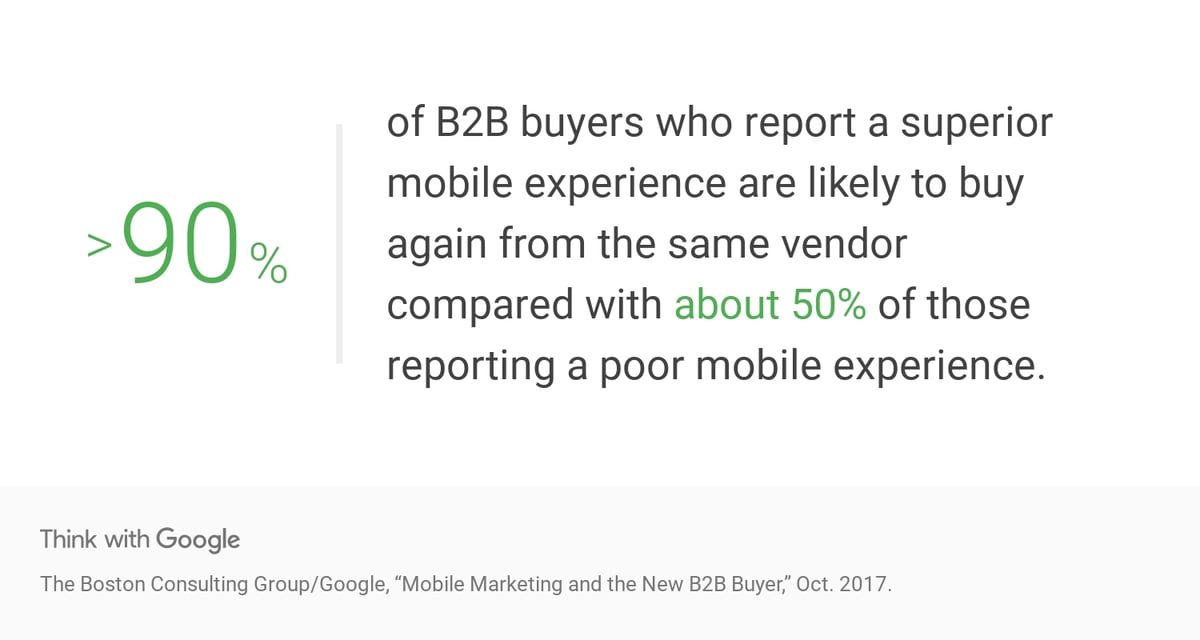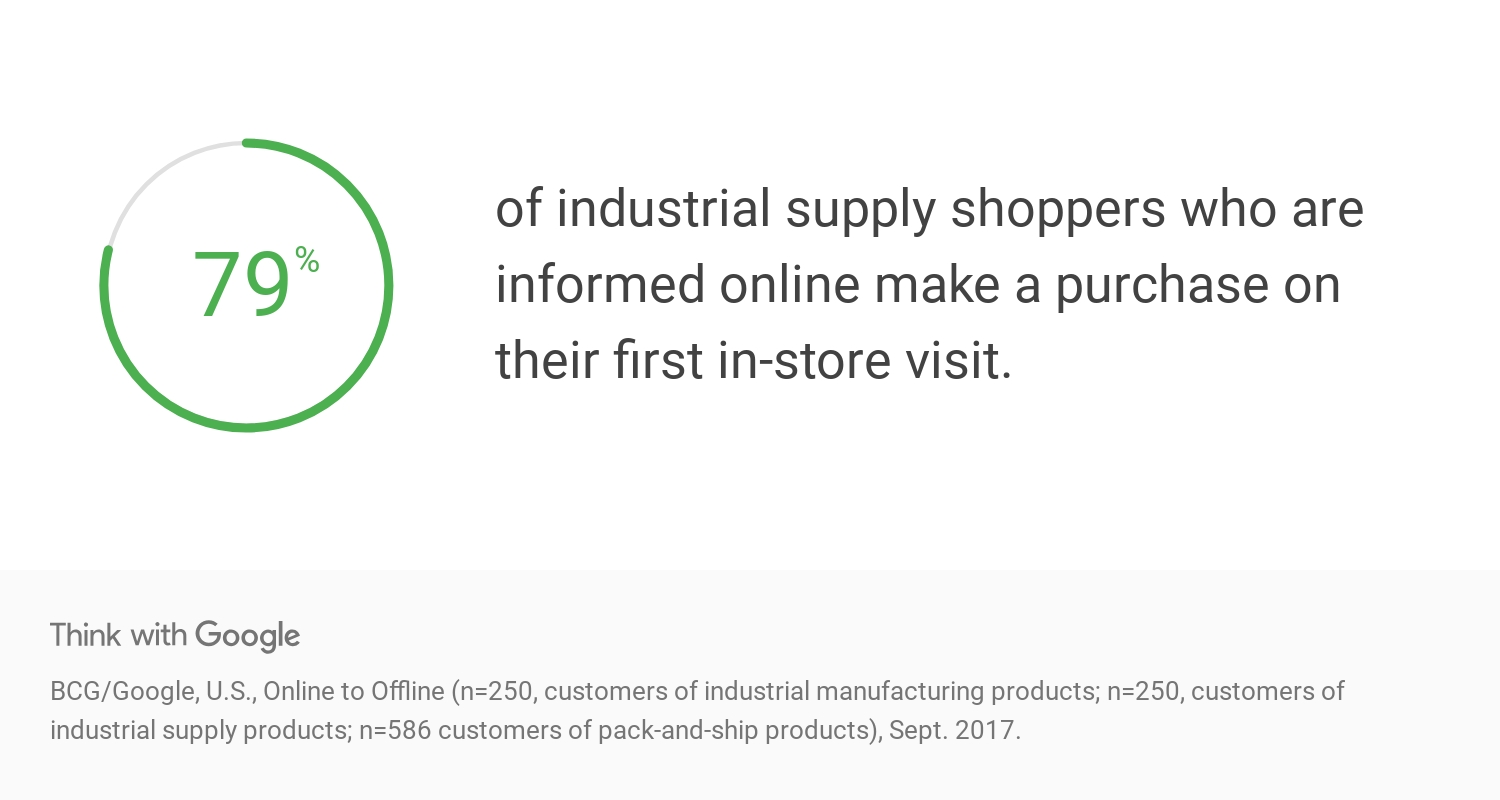Not too long ago, manufacturers and distributors bought and sold predominantly offline. Sellers printed catalogs and buyers picked up the phone. While this is still the process for some, the revolution in how everyday consumers shop has spilled over into business-to-business (B2B) companies.

Image Source: Amazon
Websites with sophisticated search and browse capabilities like Grainger now cater to the digitally savvy wave of B2B buyers who can view their contract-specific pricing when logged in.
Ever attentive to new opportunities, Amazon started selling B2B globally in 2012, and reported $10 billion in sales in 2018, achieving remarkable market penetration: “In the U.S. alone, Amazon Business serves nearly 80% of the 100 largest enrollment education organizations, 55 of the Fortune 100 companies, more than half of the 100 biggest hospital systems and more than 40% of the 100 most populous local governments.”
Forrester projects that US B2B ecommerce will hit $1.8 trillion in sales by 2023, up from $1.1 trillion in 2018, representing a 5% increase in total US B2B sales from 12% to 17%.
B2B Ecommerce Is Growing Rapidly
There’s increasing pressure to move to online B2B platforms where much of B2B business is already being conducted. Here are some 2019 numbers from the U.S. B2B Ecommerce Market report from Digital Commerce 360 highlighting this trend:
- $7 trillion of B2B transactions are made through electronic channels, accounting for more than half of all US B2B sales;
- 75% of distributors don’t have an ecommerce site but plan to launch a site in the next 2 years;
- 60% of electronic transactions are through electronic data interchange (EDI);
- 7% of B2B purchases are made through ecommerce; and
- 11% of B2B purchases are through e-procurement networks.
B2B companies must begin to adapt their people, processes, and technology to remain relevant.
B2B Ecommerce Mobile Offerings Are Popular
B2B buyers are using mobile options to buy. "50% of B2B search queries are made on smartphones, and BCG expects that figure to grow to 70% by 2020," according to research presented by Think with Google from the Boston Consulting Group.
It isn't hard to see why mobile is growing. Younger workers are joining the workforce. For them, mobile is part of everything from shopping and chatting with friends to getting directions, ordering food, travel, and so much more.
It has become second nature to want to extend that convenience into their life at work. There are also practical reasons like needing information while on site, whether at a job or buying in a branch, where accessing product details on the go empowers them to make better purchasing decisions.
When buyers have great experiences they come back and buy more. "More than 90% of B2B buyers who report a superior mobile experience are likely to buy again from the same vendor compared with about 50% of those reporting a poor mobile experience."

Image Source: Google
Digital Engagement Lead to Increased Sales Offline
Even if an online experience didn’t result in a purchase online, it will likely immediately influence an in-store or in-branch purchase decision. "Seventy-nine percent of industrial supply shoppers who are informed online make a purchase on their first in-store visit."
This shouldn't be surprising since buyers recognize the opportunity to compare products online will yield a better purchase decision, even if they intend to buy locally from a more limited selection.

Image Source: Google
When digital channels are involved post-purchase, customers return and consider cross-sell opportunities. "Industrial manufacturing customers who engaged digitally post-purchase were 2X more likely to purchase supplementary products."
The presence of digital throughout the buying journey, from pre to post-purchase, results in more sales and the chance at repeat business and cross-sell. B2B ecommerce is here to stay and will continue to be driven by digitally savvy people and organizations. What will you do to help take your organization into the future of B2B?
Tag(s):
Written by: Jonathan Herman
Recent Posts
Ecommerce Marketing
|
12 minute read
The Art of the Impulse Buy: 70% of Shoppers Say Discounts Drive Unplanned Purchases — Here’s Why
Read More
Ecommerce Marketing
|
10 minute read
What Does It Take To Have a Good Brand Reputation in 2025?
Read More
Ecommerce Trends
|
11 minute read
What Is Commerce Media — and How Can It Optimize Your Marketing Spend?
Read More
Subscribe to the Below the Fold Newsletter
Standing out on the digital shelf starts with access to the latest industry content. Subscribe to Below the Fold, our monthly content newsletter, and join other commerce leaders.


.svg)